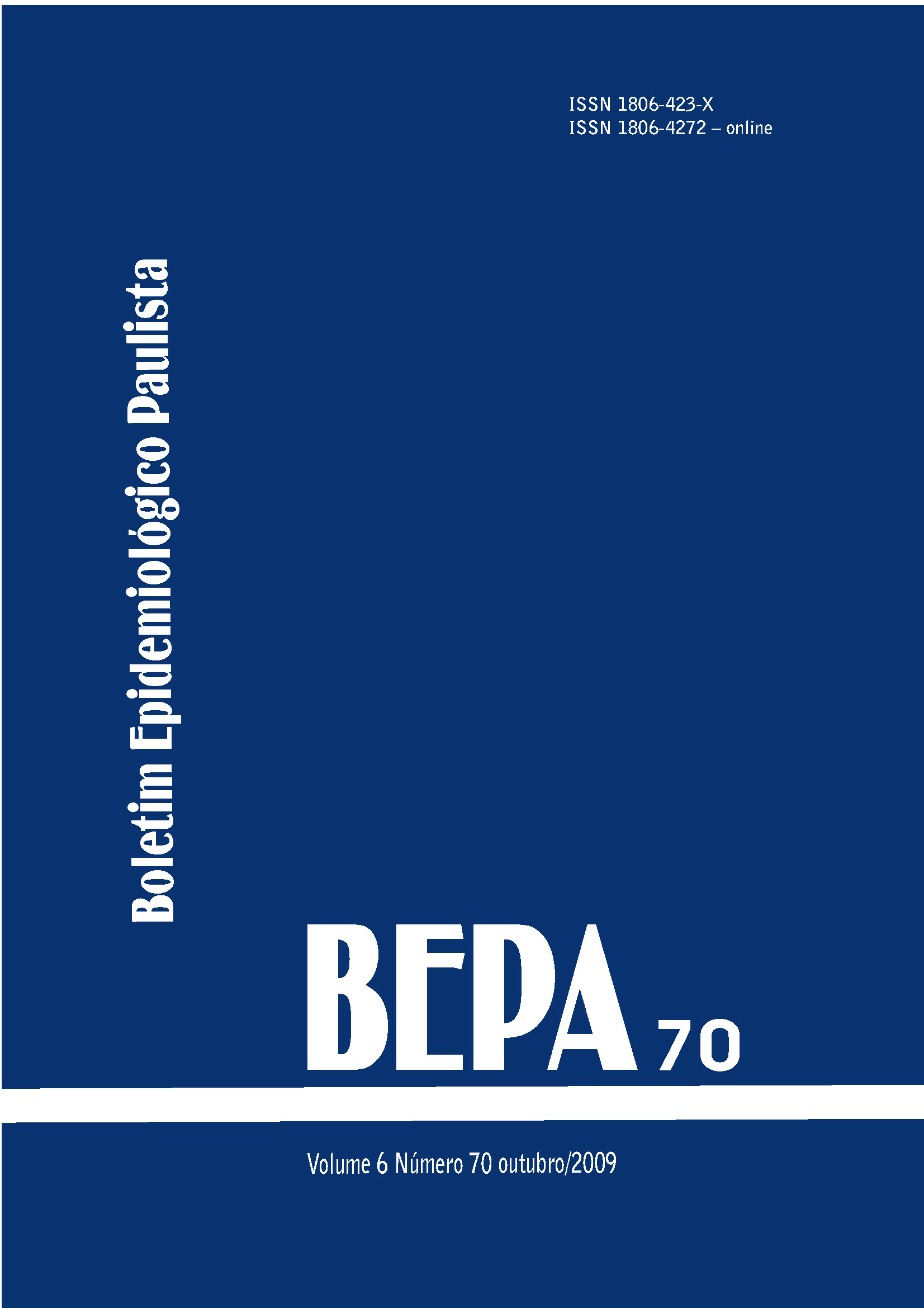Abstract
This study aims to investigate the correlation between AIDS mortality rate and social inclusion/exclusion indexes among persons aged 25 to 49 years in 96 administrative districts in the city of Sao Paulo between 2003 and 2005. Mortality data were collected from the Program for Improving Local Mortality Data and from population estimates based on the 2000 census of the State System Data Analysis. The social indexes were obtained from the city's map of exclusion (2003). Statistical analysis was performed using Pearson's correlation test (at 5% level). A significant negative correlation was seen among men and women in beginning of the period between AIDS mortality and the equity index, which measures the proportion of women who are family heads in the administrative districts. From 2000 to 2005, it was observed a significant negative correlation among women between AIDSmortality and the social inclusion indexes. Despite free antiretroviral therapy in Brazil, the study suggest a relationship between AIDS mortality and socioeconomic factors by the context in the districts. Social inequity could explain the differences observed in the neighborhood in São Paulo
References
Centers for Disease Control and Prevention - CDC. Update: mortality attribuable to HIV infection/AIDS among persons aged 25-44 years. United States, 1991 and 1992. MMWR. 1993;42:869-72.
Jougla E, Le Toullec A. Impact du SIDA sur la mortalité genérale en France. Rev Epidém et Santé Publ. 1994;42:89-91.
Conti S, Masocco M, Farchi G, Rezza G, Toccaceli V. Premature mortality in Italy during the first decade of the aids epidemic: 1984-1993. Int J Epidemiol. 1997;26:873-9.
Centers for Disease Control and Prevention - CDC. Trends in the HIV & AIDS Epidemic. United States; 1998.
European Centre for the Epidemiological Monitoring of Aids, Unaids/WHO - EUROHIV, Collaborating Centre on Aids. Mid-Year report 2000; n. 63; France; 2000.
Fonseca MGP, Barreira D. Coordenação Nacional de DST e Aids. A evolução da mortalidade por Aids no País, segundo sua distribuição geográfica. Brasília; 2001.
Ministério da Saúde, Secretaria de Vigilância em Saúde, Programa Nacional de DST e Aids. Critérios de definição de casos de aids em adultos e crianças. Brasília (DF): Ministério da Saúde; 2003. p.56.
Dourado I, Veras MASV, Barreira D, Brito AM. Tendências da epidemia de Aids no Brasil após a terapia anti-retroviral. Rev Saúde Pública. 2006;40 (Supl):9-17.
Waldvogel B. Aids: principal causa de morte na idade reprodutiva. Mulheres em dados - Informativo mensal sobre a mulher paulista 1997; SEADE, 1997, n.9.
Programa Estadual DST/AIDS - São Paulo. Análise dos dados referentes à Aids no Estado de São Paulo. Boletim Epidemiológico. 2008; 25(1).
Drumond Júnior D, Lira MMTA, Freitas M, Nitrini TMV. PRO-AIM, Secretaria Municipal de Saúde. A AIDS e os sistemas de informações de mortalidade em nível local: a experiência do PRO-AIM no município de São Paulo. São Paulo; 1996.
Programa de Aperfeiçoamento das Informações de Mortalidade no Município de São Paulo - PRO-AIM, Secretaria Municipal de Saúde. Estatísticas: PRO-AIM: Mortalidade por AIDS. Boletim. Desigualdades sociais na mortalidade por AIDS na cidade de São Paulo. São Paulo; 1997. 40 trimestre 1996.
Programa Municipal de Doenças Sexualmente Transmissíveis e Aids, Secretaria Municipal de Saúde. São Paulo; 1998b. Boletim epidemiológico. Distribuição Espacial dos Casos Notificados de Aids no Município de São Paulo. Ano II; número 3; 1998.
Farias NSO. Mortalidade por Aids e condições socioeconômicas no município de São Paulo, 1994 a 1999 [tese de doutorado]. São Paulo: Faculdade de Saúde Pública da USP; 2002.
Antunes JL, Waldman EA, Borrell C. Is it possible to reduce AIDS deaths without reinforcing socioeconomic inequalities in health? Int J Epidemiol. 2005;34(3):586-92.
Sposati A. O mapa da exclusão. In: Izique C. Pesq FAPESP 2003; 83: 15-20.
Sacker A, Firth D, Fitzpatrick R, Lynch K, Bartley M. Comparing health inequality in men and women: prospective study of mortality 1986-96. BMJ. 2000;17(5): 1099-110.
Bastos FI, Barcellos C. Geografia Social da Aids no Brasil. Rev Saúde Pública. 1995; 29: 52-62.
Steele CB, Richmond-Reese, Lomax S. Racial and ethnic disparities en HIV/AIDS, sexually transmitted diseases, and tuberculosis among Women. J Womens Health. 2006;15(2):116-22.
Ruiz-Ramos M, Sánchez J, garrucho G, Viciana F. Desigualdades en mortalidad en la ciudad de Sevilla. Gac Sanit. 2004;18(1):16-23.
Parker R, Camargo KR. Pobreza e HIV/AIDS: aspectos antropológicos e sociológicos. Cad Saúde Publica. 2000;16(Suppl 1):89-102.

This work is licensed under a Creative Commons Attribution 4.0 International License.
Copyright (c) 2009 Norma Farias, Karina Paiva
